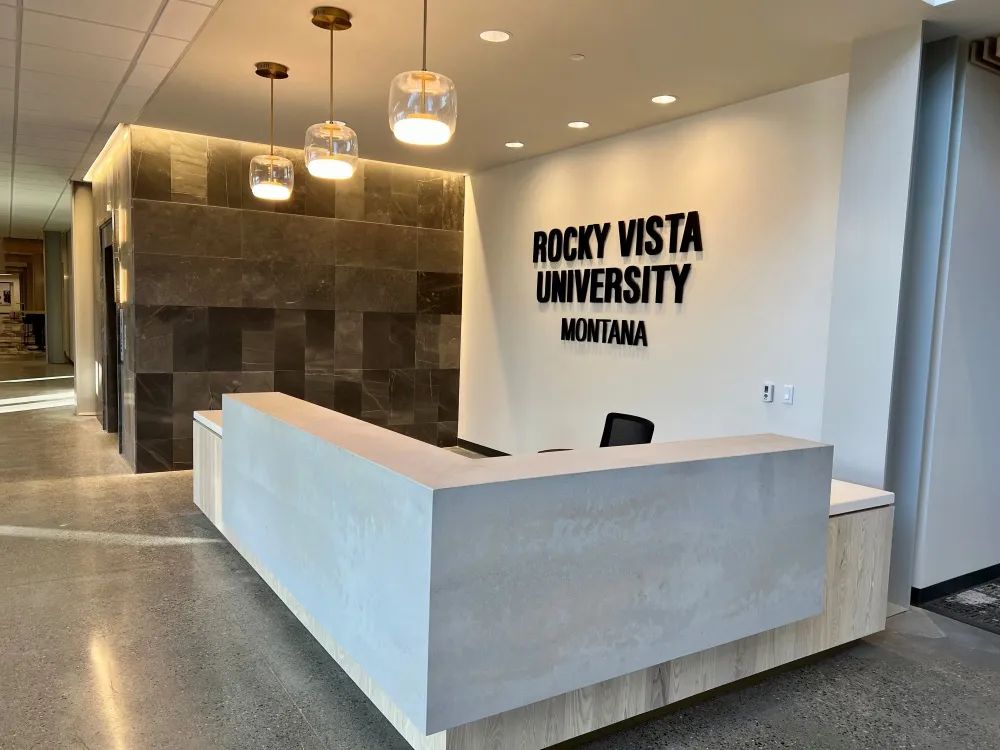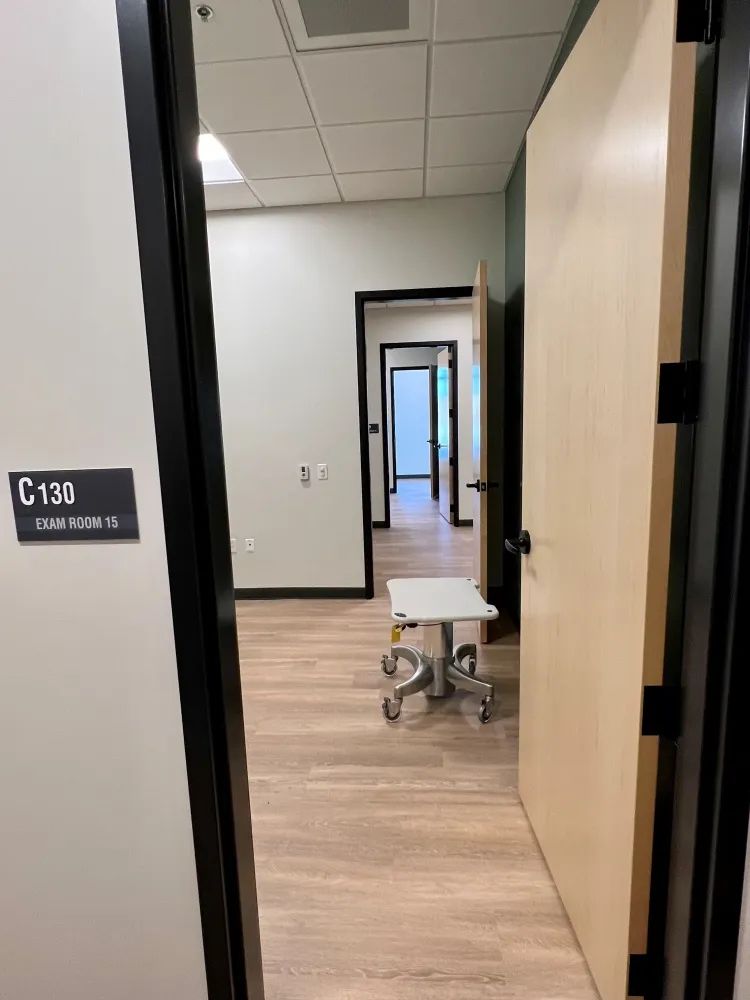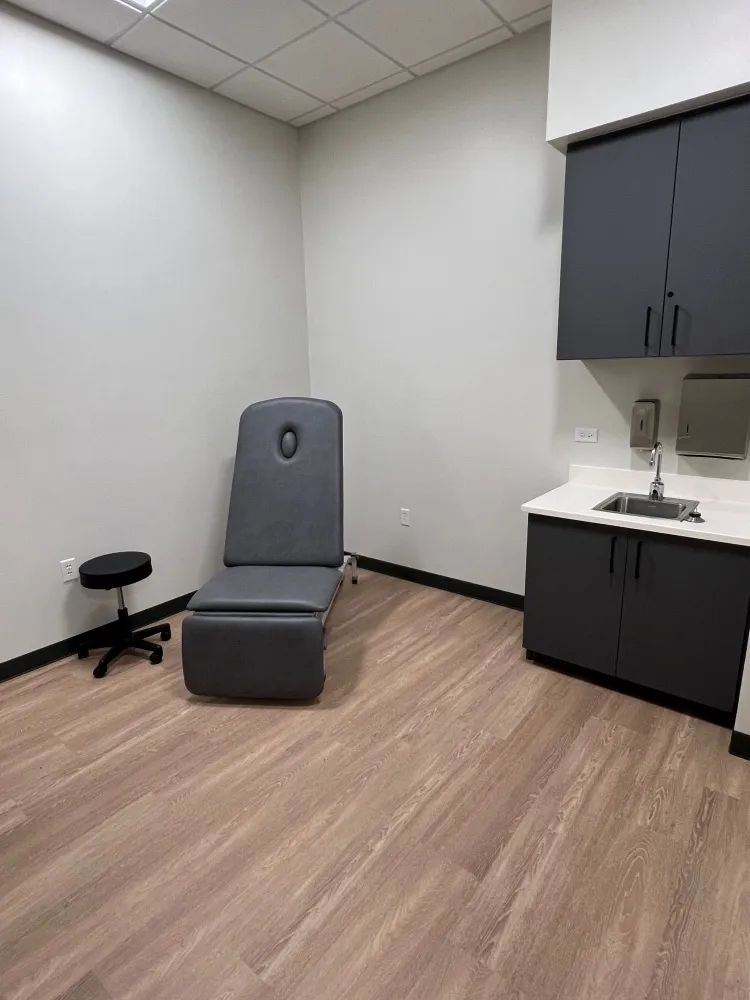
Inside Montana’s First Medical School: RVU-MCOM, part 2
January 24, 2023
by rebecca stewart
As we shared in part 1, Simply Local Billings was on site to take part in the January 23 media tour of Montana's first medical school, Rocky Vista University-Montana College of Osteopathic Medicine. On the tour, we were able to chat with Arianne Snyder, Marketing & Communications Manager; Becky Anglin, DNP, RN, Director of Simulation; Becky Rogers, Director of Campus Operations; and David J. Park, DO, FAAFP, FACOFP, Vice President and Founding Dean Montana COM.
Come along as we go inside RVU-MCOM
KEY FEATURES:
Modern architecture that capitalizes on natural light, innovative technology, immersion room simulations, high-fidelity mannequins, hand-held ultrasound, group-based active learning spaces, and an anatomy lab for both cadavers and virtual reality. Emphasis on physical and mental wellbeing flows throughout the campus and includes a yoga studio and full fitness center. A full-time mental health counselor will be located on site for students to readily access mental health services. Indoor and outdoor spaces are designed to build community by giving students places to gather.
Dr. Park noted that when people walk through the door, his hope is that people get a wow factor, which you definitely do. “Internally,” he shared, “when we were planning, it was called the Big Sky Project, so we wanted Big Sky and windows and wood trim, that Montana feel.” Approaching the building, you can’t help but be struck by the stunning exterior, but then you walk in to soaring ceilings with exposed wood beams, perfectly complemented with darker elements and cable and iron railings, and incredible washes of natural light. Wow, indeed. Throughout the campus, you will discover other beautiful touches of Montana elegance.

Like this gorgeous bench | photo by Stephanie Toews
Beauty aside, there is learning to be done inside these impressive walls. The third RVU campus (there is one each in Colorado and Utah), MCOM was constructed and designed with a mindset of creating a learning environment ripe for growth and innovation.
Our first stop on the tour was a large classroom that would have traditionally been built as a lecture hall. Here, though, the spacious, acoustically minded classroom is set up in pods because, Snyder explained, “a lot of the focus of Montana College of Osteopathic Medicine is student-directed learning.” Rather than having professors lecturing in front of the classroom, it’s meant to be more interactive. Rogers elaborated, saying, “They’re called active learning sessions instead of lectures, so they won’t sit through four hours of lectures, instead they’ll sit through classes where they’ll do case studies together.” Once fully complete, screens will line the walls, which will ultimately enhance classroom study and discussion, creating a more collaborative experience.

One of the large classrooms | photo by Stephanie Toews
This approach to learning – doing instead of simply hearing – is felt throughout the building. In fact, Dr. Park has taken his extensive years of experience in medical education and taken note of what the medical students like and dislike and how they learn. He’s seen the evolution of how adult learners in this generation like to learn and the importance of adapting to that. Acknowledging the digital world we live in and the learning that takes place there, he explained, “So, understanding the new culture and the way they learn, we know that students like to learn from one another. They like to talk and listen and engage and pick each other’s brains, as opposed to passively sitting, listening to the expert on the stage. So, that’s the way we have specifically and purposely designed this medical school, for that type of curriculum.”
Next, we made our way to an impressive array of Clinic Rooms, rooms that students can go in and practice their clinical skills in a controlled environment.

photo by Stephanie Toews
In these rooms, community members will be hired to come and “play patients.” They’ll receive (along the lines of) $25, a scenario, and come in full character to be seen by a medical student. The rooms are equipped with video cameras and sound so they can watch, review, go into a debrief room and analyze how things went.

"Patient" and medical student will never see each other out of character, as each will enter the room from a separate entrance. | photo by Stephanie Toews
As we approached the Immersion Simulation Rooms, we were each startled by an incredibly realistic mannequin staged on the floor of the first room. Nurse Anglin, Director of Simulation, took us through these rooms, explaining that the rooms can transform into anything they want the students to be in.

This mannequin was simulating a drowning victim, placed as if pulled from the water and on the path (visible on the screen). You can see bystanders walking, hear them talk, and even hear birds as they fly about. | photo by Stephanie Toews
Students can be put in the wilderness, military scenes, ORs, labor & delivery – any kind of room they want – additionally pumping in different smells, temperatures, and sounds. What truly makes these rooms special (of which Anglin was told there are roughly 400 of these simulators in the world), is that you’ve got the mannequins, but then the walls come to life and act as prompts. Students are able to work together and critically think through what’s going on versus having faculty in the room handling them.

The i in a circle indicates where students may press to receive various prompts. | photo by Stephanie Toews
When you touch the prompts on the walls, things like vital signs or x-rays pop up for the student, so they can see what’s going on with the patient and start diagnosing them and figure out how to triage them. There are also video cameras in these rooms, with faculty watching from outside the room, available to help as needed.
Next, we encountered Hospital Rooms with astonishingly realistic mannequins (when I tell you how we marveled over the infant mannequin…). On these mannequins, students can do CPR, start IVs, put in lines – do everything necessary – along with having speaker boxes so instructors can speak for them from a centrally located control room with observation capabilities.

This mannequin is designed as an elderly woman and the skin mimics the skin of an elderly person in texture and form. | photo by Stephanie Toews
Next door was the birthing moms room where the mannequin was visibly breathing with audible and visual vital signs for mom and baby at work. The hospital simulation includes an ambulance bay, ER, OR, ICU, and medical surgical unit (including scrub sinks).

Pregnant mother and infant mannequins | photo by Stephanie Toews
Completing this more clinical portion of the tour were the “Trainers.” Here students will be trained on how to do ultrasounds, a telemedicine cart to learn how to provide telemedicine health over a computer with a patient, and two SAMS (Student Auscultation Manikin) that allow students to listen to heart and lung sounds.

SAMS (Student Auscultation Manikin) - The faculty can input different lung sounds, like COVID sounds or pneumonia sounds | photo by Stephanie Toews
From there, Becky Rogers took over, taking us, first, to the Yoga Studio, an area they anticipate being really popular for the students. Straight across the hall is the Fitness Center, complete with several individual shower rooms. Rogers noted that as faculty has developed the curriculum, “they’re developing it beyond learning how to treat patients, and really trying to teach them how to care for themselves as they care for others…Wellness and reflection breaks are built into the curriculum. All the basics are the same as every other medical school, but how we’ve structured the curriculum and how we’re adding in that component of health and wellness is very innovative.”
Sprinkled throughout the building are a variety of Study Rooms, in different sizes – some for individuals and others for group study. Lots of intentional space was integrated for students to sit down or put their head down, if needed – indoor or out. One of the values of RVU, said Rogers, is Diversity, Equity, Inclusion, which you see reflected in the design with a Mother’s Room, a Meditation Room, and a handful of all-gender bathrooms.

Study rooms can accommodate individual or group studiers | photo by Stephanie Toews
As we traveled upstairs, we first encountered the Virtual Reality Lab, where students will wear VR goggles to go inside the human body – “much like The Magic School Bus,” Rogers laughed.
The Anatomy Lab is currently a wide open space, complete with skeleton, ready for learning to take place through the gift of cadavers.

Anatomy Lab | photo by Stephanie Toews
Next, we explored the Osteopathic Clinical Skills Lab where students will practice on each other while learning from the incredible faculty here.

photo by Stephanie Toews
From the labs, we found ourselves at the Library, though not a traditional library, as there will be very few books on hand because as Dr. Park noted, “just about every library book and journal is online, so we have a massive online library subscription.” With access to 50,000 applications and research, the subscription – at the university level – is shared with all employees, all students (from all three campuses), and adjunct faculty members. A librarian will be on hand, however, to help students and faculty if they want to do research to pull articles and help find citations. “Libraries,” said Dr. Park, “are now typically like a sanctuary for students to study – a quiet space for them, and sometimes, because we have nice sofas and beautiful warm lighting, maybe they’ll take a nap and recharge their mind.”

The spacious library is more about a quiet study place than a place to page through actual books | photo by Stephanie Toews
Other spaces upstairs include faculty and administrative offices, additional study rooms, and one of Rogers' favorite spaces, this darkened glass study room with a slight overhang.

photo by Stephanie Toews
To learn more about the depth of experience on the RVU-MCOM team, check out https://www.rvu.edu/mcom/leadership-team/.





<<<<<photos by Stephanie Toews<<<<<
Never miss an issue, check out SLM's digital editions here!








